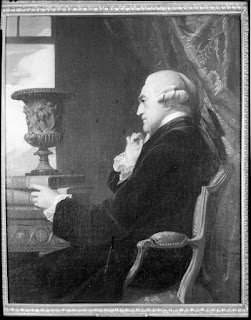Saturday, May 25, 2013 -  2013 ARCA Annual Art And Heritage Conference
2013 ARCA Annual Art And Heritage Conference
 No comments
No comments
 2013 ARCA Annual Art And Heritage Conference
2013 ARCA Annual Art And Heritage Conference
 No comments
No comments
Speakers list released for ARCA's 5th Annual Art & Heritage Conference in Amelia June 21-23, 2013
 |
| View of the hilltop town of Amelia in Umbria (Photo by C. Sezgin) |
The Association for Research into Crimes against Art (ARCA) has released the speaker list for it's 5th Annual Art & Heritage Conference in Amelia from June 21 to 23.
Speakers anticipated:
Toby bull, Senior Inspector, Hong Kong Police Force, "Property of a Hong Kong Gentleman, Art Crime in Hong Kong - Buyer Beware";
Ruth Godthelp, PhD Candidate Vrije Universiteit of Amsterdam, Senior Police officer art related crime, Amsterdam Police, "The nature of crimes against Arts, Antiques and Cultural Heritage: A description of art-related crime in the Netherlands";
Saskia Hufnagel, Research Fellow, ARC Centre of Excellence in Policing and Security, "Shifting Responsibilities: The Intersection of Public and Private Policing in the Area of Art Crime";
James Moore, retired trial lawyer and student of Caravaggio, "The Outrageous Theft of Caravaggio's Masterpiece The Nativity with Saint Francis and Saint Lawrence";
James Bond, ARCA Alumnus, Certificate 2011, "The Theft of Rare Books from the largest Home in the United States";
Chris Dobson, Former Master Armourer to the Royal Armouries at the Royal Armouries Museum in Leeds, "Claiming Fake 'Fakes' in the Trade in Arms and Armour";
Stefano Alessandrini and Derek Fincham will lead a discussion on the Fano Athlete/Getty Bronze;
Joris Kila, Senior Researcher at the University of Amsterdam, ARCA award winner 2012, "An update on Armed Conflict and Heritage";
Nicholas M. O'Donnell, Partner with Sullivan & Worcester LLP, "American Wartime Art Restitution Litigation in the 1990s and Beyond-- Has it All Been Worth it?"
Jerker Rydén, Senior Legal Advisor Royal Library of Sweden, "Skullduggering in the Stacks: Recovering stolen books for the Royal Library of Sweden";
Judith Harris, author and free-lance journalist, regular contributor to the New York monthly ARTnews, "The Role of Collectors";
Felicity Strong, PhD Candidate, University of Melbourne, "The mythology of the art forger";
Joshua Nelson, MA Candidate in Art & Visual Culture, University of Guelph, "Framing the Picture: The Canadian Print Media's Construction of an Atypical Crime and its Victims";
Theodosia latsi, MA in Global Criminology, Utrecht University, "The Art of Stealing: The Case of Museum Thefts in the Netherlands";
Verity Algar, Art History Student, University College London, "Cultural memory and the restitution of cultural property: Comparing Nazi-looted art and Melanesian malanggan";
Giulia Mezzi, PhD Candidate University of Reading, "The origins of Cultural Heritage Protection in Italy, a historical survey"
Carrie Johnson, JD Candidate South Texas College of Law, "Cultural Property in Crisis: Whose Burden is it?"
Alesia Koush, Foundation Romualdo Del Bianco-Life Beyond Tourism in Florence, MA Candidate at the University of Cologna under Prof. Luciana Carrino, "The Right to Culture"; and
Cynthia Roholt, JD Candidate South Texas College of Law, "Human Remains: Permission and Plastination".
The conference will open with cocktails at Palazzo Farrattini on Friday evening, June 21. The speakers will present at Chiosto Boccarini on Saturday and Sunday. Imbedded in the conference will be tthe ARCA Award Presentations: Art Policing and Recovery Award to Sharon Cohen Levin, Chief of the Asset Forfeiture Unit in the United States Attorney's Office for the Southern District of New York; Art Protection and Security Award to Christos Tsirogiannis, Archaeologist, Illicit antiquities researcher, University of Cambridge, former member of the Hellenic Ministry of Justice; Eleanor and Anthony Vallombroso Award for Art Crime Scholarship to Duncan Chappell, Professor in the Faculty of Law at the University of Sydney, Australia; and the Lifetime Achievement in Defense of Art to Bianco Nino Norton, Consultant Petén Development Project for the conservation of the Maya Biosphere Reserve, Ministry of Environment of Natural Resources/BID, Delegation of World Heritage Guatemala, Treasurer ICOMOS Guatemala, Presently serving as a Council Member for ICCROM.
The 5th Annual Art & Heritage Conference will have a dinner Saturday night at Locanda.







